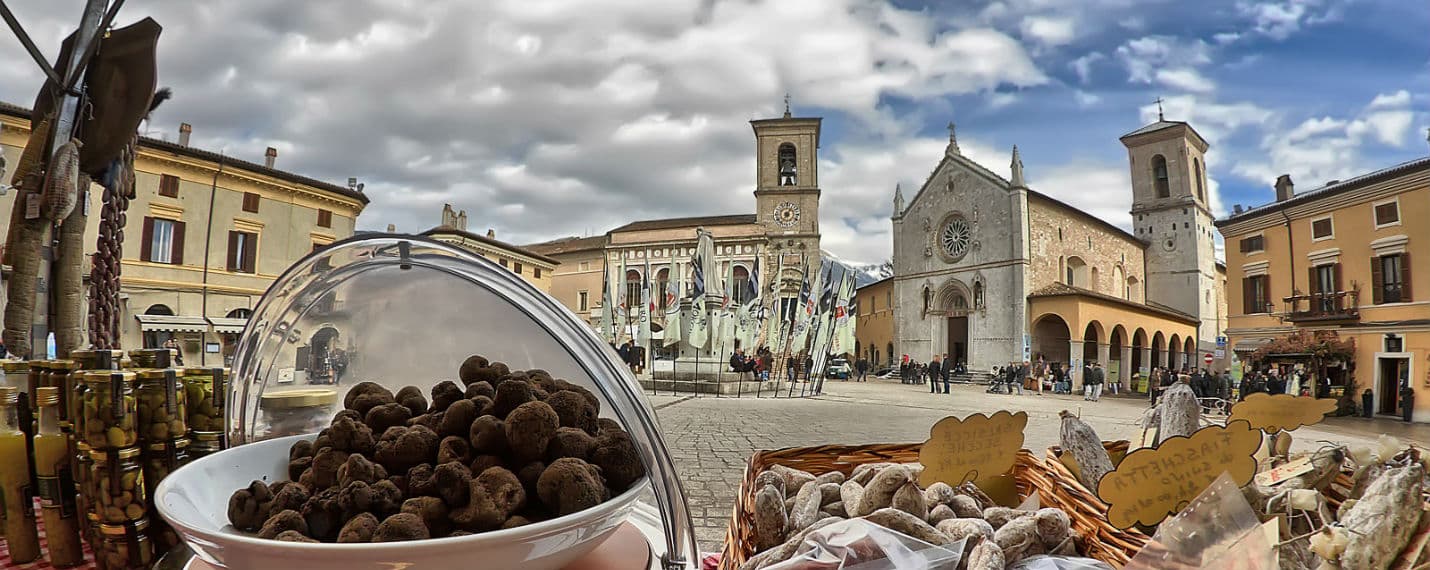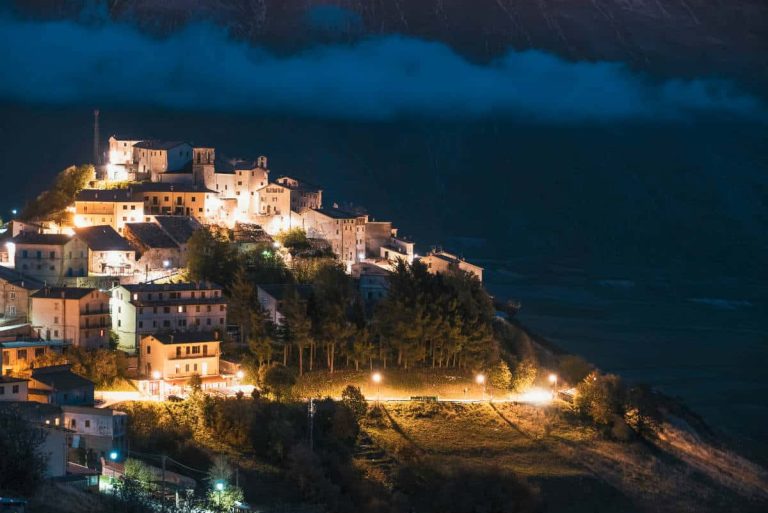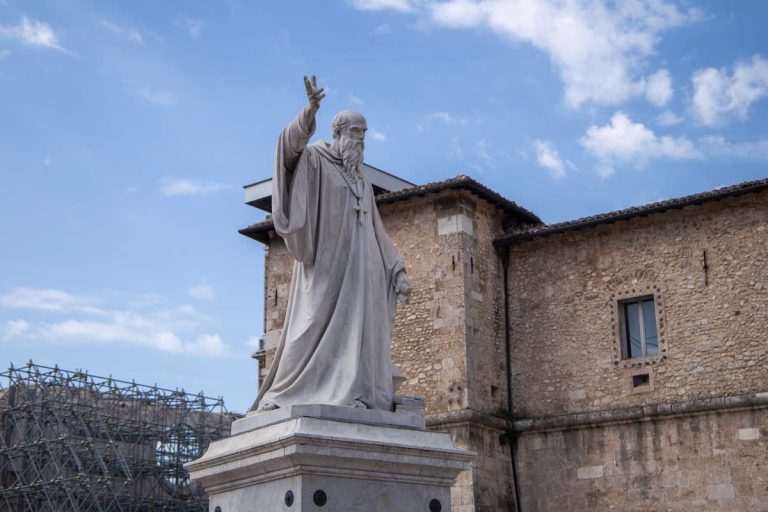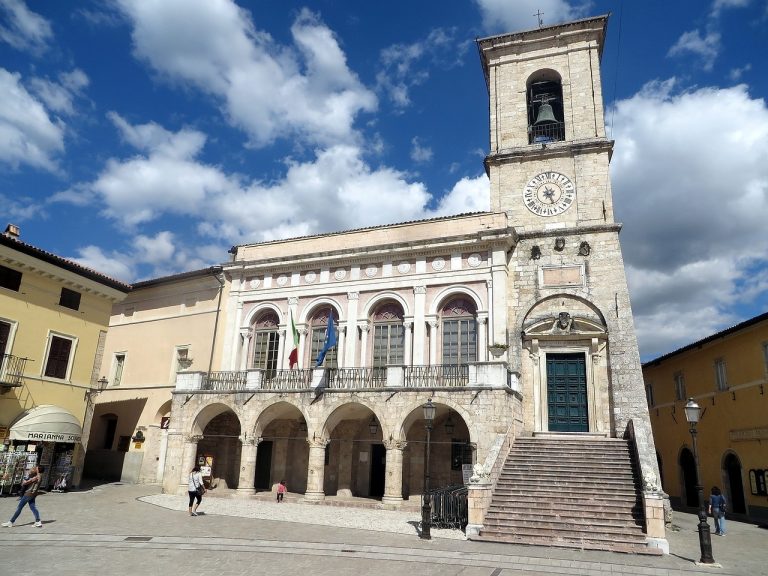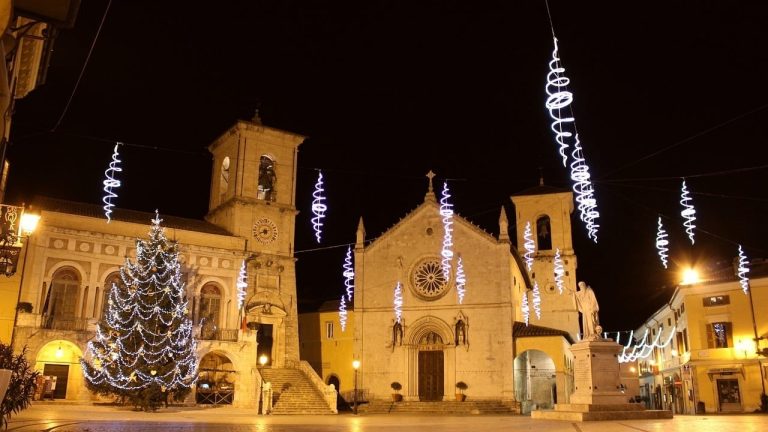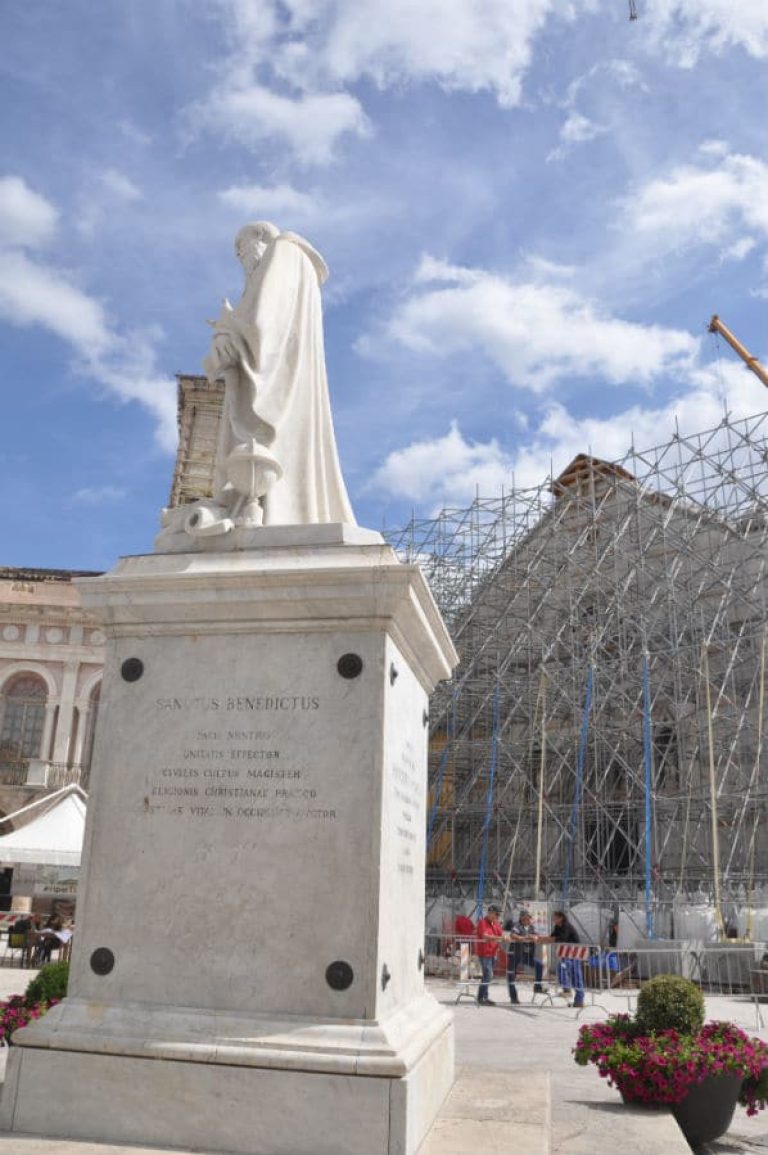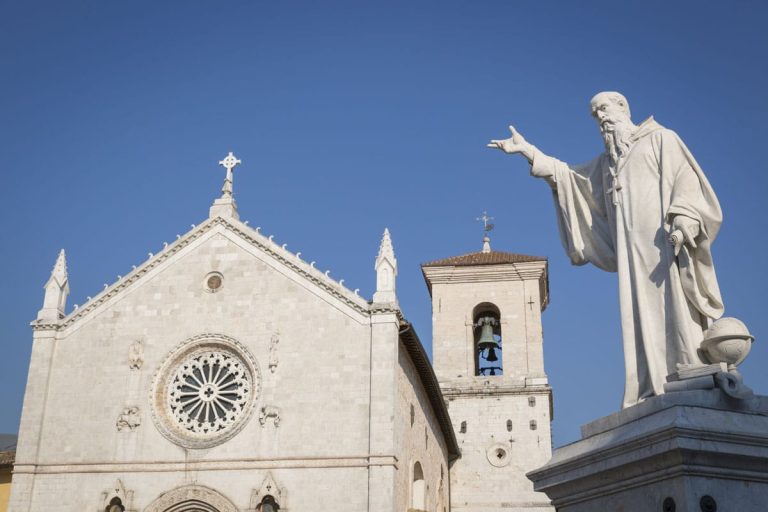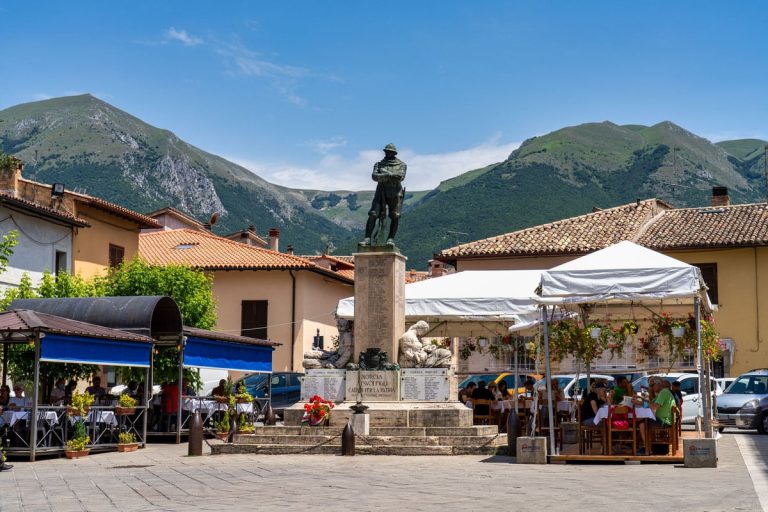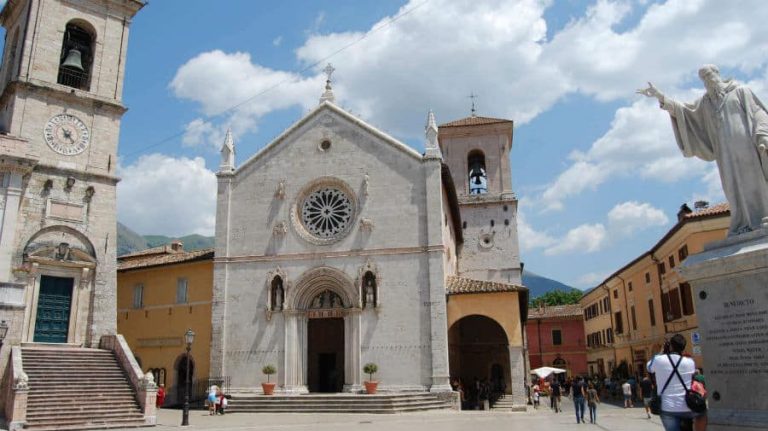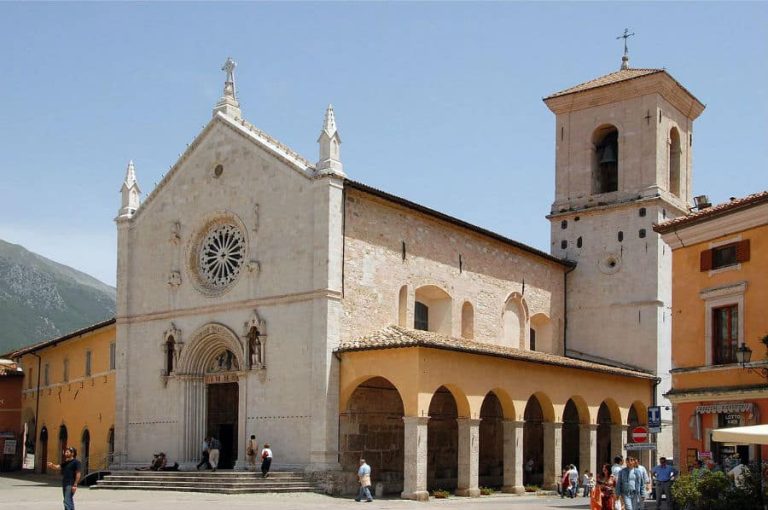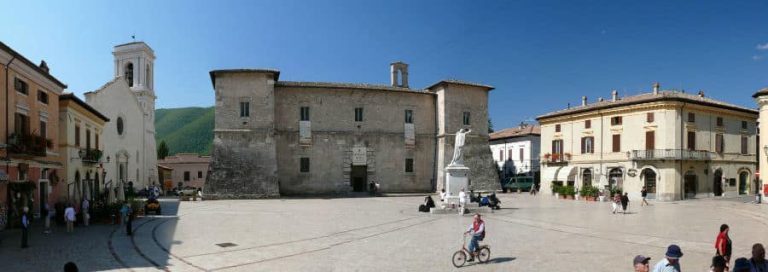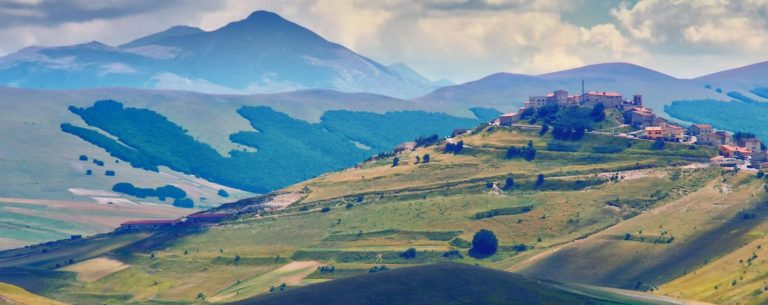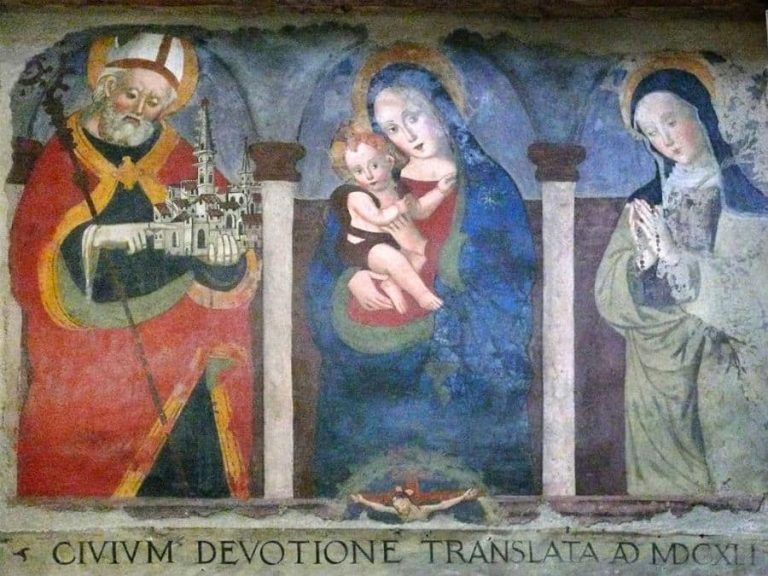In the green heart of Umbria, at the foot of the Sibillini Mountains, stands Norcia, a village steeped in history, spirituality and centuries-old traditions. An ancient Sabine center, known since antiquity as Nursia, this town has been able to face with courage and determination the many wounds inflicted by earthquakes - most recently that of 2016, which devastated much of its artistic and religious heritage - yet revealing an astonishing capacity for rebirth.
A millennial history between spirituality and art
Norcia traces its roots back to pre-Roman times, founded by the Sabines and later conquered by the Romans in the 3rd century BC. The city's importance grew due to its strategic location, fertile surrounding land and the presence of distinguished Roman citizens. However, it was in the 5th century that Norcia wrote one of its most glorious pages: St. Benedict and St. Scholastica, central figures in Western monasticism, were born here. Benedict founded the Benedictine Order and his motto Ora et Labora spread throughout Europe, transforming Norcia into the cradle of medieval Christian culture.
During the Middle Ages, Norcia became a free commune, endowing itself with a mighty city wall and establishing itself as a political and commercial center. In 1569, with the creation of the Mountain Prefecture, an artistic flowering began, enriching the town with churches, palaces and works of art. Unfortunately, the earthquakes of 1703, 1859 and, more recently, those of 2016, have repeatedly undermined the town's monumental heritage.
The heart of the city: St. Benedict Square
The focal point of the historic center is Piazza San Benedetto, Norcia's true urban living room. The city's main landmark buildings are concentrated here: Basilica of St. Benedict, erected above the house where the saint was born, with its striking Gothic facade and crypt with Roman remains. Collapsed in 2016, it is now the subject of a major reconstruction; Palazzo Comunale, with its loggia and civic tower, evidence of the ancient medieval civic splendor; La Castellina, a 16th-century fortress designed by Vignola, former residence of the papal governor and now home to the Civic and Diocesan Museum; Co-cathedral of Santa Maria Argentea, an elegant Renaissance building, badly damaged but a symbol of Norcia's spirituality; Portico delle Misure, a place of agricultural trade in the 16th century, where grains were weighed according to standardized measurements.
The "yelps" and the popular soul of the village
Norcia is divided into historic neighborhoods called guaite, with an eighteenth- to nineteenth-century urban layout strongly influenced by papal earthquake regulations. The low buildings, with sloping (scarp) perimeter walls, tell a long story of adaptation and resilience.
Among the many religious buildings worth mentioning: Church of St. Augustine, with 14th-century frescoes; Tempietto di San Benedetto, a Gothic jewel dating from 1354; Church of the Crucifix and Church of St. Lawrence, precious testimonies to popular faith.
Nature, sports and spirituality
Nestled in the Monti Sibillini National Park, Norcia is also a favorite destination for lovers of nature and outdoor activities. The nearby Castelluccio Plains offer breathtaking scenery, particularly in spring with the spectacular flowering. Trekking, cycling, horseback riding, hiking, rafting and free flight: the Valnerina is a true natural paradise.
Places not to be missed in the surrounding area: Forca Canapine, a center for winter sports and trekking; Monte Vettore (2476 m), with the striking Lake Pilato; Grotta della Sibilla, linked to mysterious legends; Cascia, birthplace of Santa Rita, not far away.
A city wounded but alive
The 2016 earthquake hit Norcia hard. However, the strength of its people, combined with public and private support, has sparked a slow but determined process of reconstruction and rebirth, which is restoring dignity and future to the village.
Norcia is now a destination that moves, fascinates and enriches. Visiting it means touching the deep history of Italy, savoring its most authentic soul and being inspired by the tenacity of those who, despite everything, have chosen to stay, rebuild and welcome.

